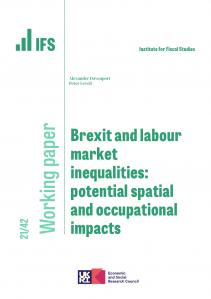In 2013, support for low-income households to pay their council tax was localised across England and funding for it was cut, while it was mandated that pensioners be protected. Hence for the first time since the poll tax, some of the lowest-income households have been required to pay local tax.
- 90% of English councils have now cut council tax support (CTS) for those of working age below the levels provided to pensioners.
- As a result, an extra 1.3 million working-age households are sent a council tax bill and another 1.2 million are billed for more than they would have been.
- But many households have fallen behind with their council tax bills as a result, meaning that councils have failed to collect one-quarter of the extra tax that they have asked for.
These are among the findings of new IFS research, funded by the Nuffield Foundation and published today. Key points include:
- Across Great Britain, CTS was paid to 4.9 million households in 2017–18 – more than any other form of means-tested support – at a cost to LAs of £4.1 billion. Spending on the 2.4 million working-age claimants in England came to £1.8 billion, implying an average award for those claimants of £770 per year.
- CTS schemes have continued to get less generous. The total cut to CTS entitlements for working-age households in England was 14% in 2013–14 and had grown to 20% by 2018–19.
- Working-age households are now treated very differently depending on where they live. Of the 1.8 million working-age households in England that would otherwise have been entitled to a full rebate for their council tax, about half a million still get a full rebate. But 72% (1.3 million) must pay some council tax in 2018–19; 63% must pay more than £100, a third must pay more than £200 and almost one in ten must pay more than £300.
- Poor households in poor parts of England are more likely to have been affected than poor households in affluent parts; but those affected in affluent areas tended to lose the most. Councils in poorer areas suffered a bigger funding cut for CTS (precisely because they had more CTS recipients), and this made them more likely to make cuts to their CTS schemes; but council tax tends to be higher in rich areas, so those rich areas that did cut CTS tended to create the biggest losers.
- Around a quarter of the extra council tax that low-income households have been billed for has not been collected. This rate of non-collection is around 10 times higher than the 2.5% of council tax liabilities not collected by councils on average before the CTS cuts.
- It is giving people an entirely new bill that seems to be so problematic for tax collection. Where CTS is cut for households who would have had to pay some council tax anyway, we detect no increase in arrears.
Thomas Pope, a researcher at IFS and one of the authors of the report, said:
"Many low-income households do not pay this new bill, almost regardless of its size. From their point of view, these changes have clearly increased problems with council tax arrears. From councils’ point of view, they are likely to receive significantly more council tax if they increase bills for those already paying some council tax than if they try to raise the same extra money from those who currently have no bill to pay."
Mark Franks, Director of Welfare at the Nuffield Foundation said:










